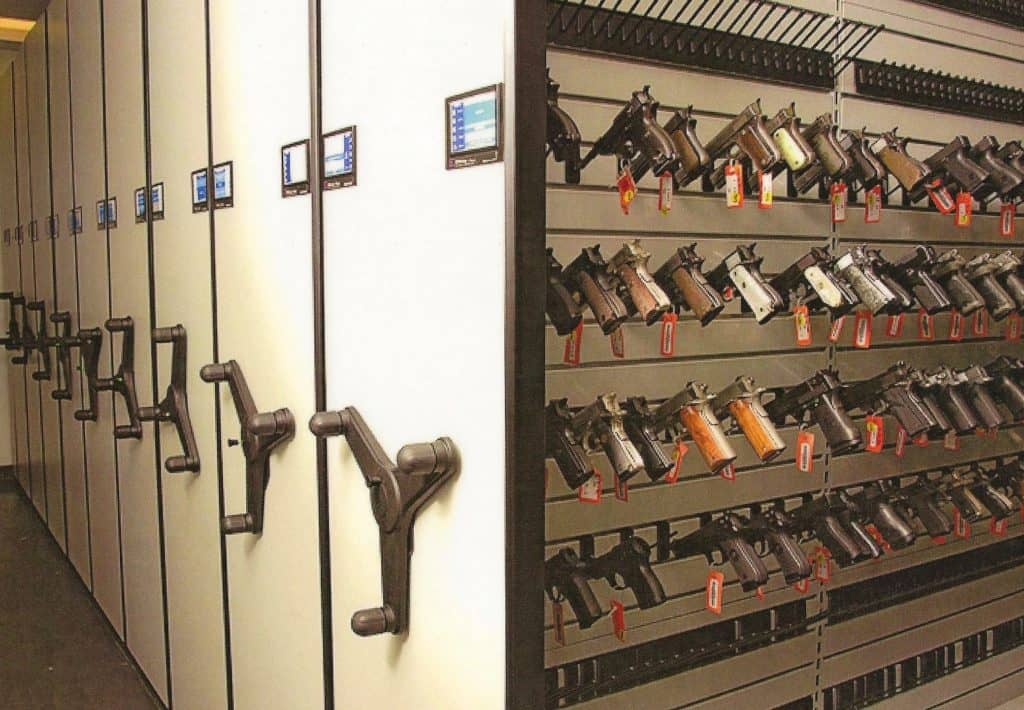
৺৕ড়ৃৌа§∞ а§Фа§∞ а§Й৙а§Ха§∞а§£ ৙а•На§∞а§ђа§В৲৮ а§Ха•З а§Ха•На§Ја•З১а•На§∞ а§Ѓа•За§В, а§∞а•За§°а§ња§ѓа•Л а§Ђа•На§∞а•Аа§Ха•Н৵а•За§Ва§Єа•А а§Жа§За§°а•За§Ва§Яа§ња§Ђа§ња§Ха•З৴৮ (а§Жа§∞а§Па§Ђа§Жа§Иа§°а•А) ৙а•На§∞а•М৶а•На§ѓа•Ла§Ча§ња§Ха•А а§Ха§Њ а§Еа§≠а§ња§Ча§Ѓ ৮ড়ৃа§В১а•На§∞а§£ а§Фа§∞ а§Єа•За§Ва§Єа§∞ ৙а•На§∞а§£а§Ња§≤а§ња§ѓа•Ла§В а§Ха•З ৪ৌ৕ а§Па§Ха•Аа§Ха§∞а§£, а§Єа•Ба§∞а§Ха•На§Ја§Њ, а§Е৮а•Б৙ৌа§≤৮ а§Фа§∞ ৙а§∞а§ња§Ъа§Ња§≤৮ ৶а§Ха•Нৣ১ৌ а§Єа•Б৮ড়৴а•На§Ъড়১ а§Ха§∞৮а•З а§Ха•З ১а§∞а•Аа§Ха•З а§Ѓа•За§В а§Ѓа•Ма§≤а§ња§Х ৙а§∞ড়৵а§∞а•Н১৮ а§≤а§Њ а§∞а§єа§Њ а§єа•Иа•§
৙а§∞а§В৙а§∞а§Ња§Ч১ а§∞а•В৙ а§Єа•З, ৺৕ড়ৃৌа§∞ ৙а•На§∞а§ђа§В৲৮ а§Ѓа•И৮а•На§ѓа•Ба§Еа§≤ ৙а§Ва§Ьа•Аа§Ха§∞а§£ а§Фа§∞ а§Ха§Ња§Ча§Ьа§Љ-а§Жа§Іа§Ња§∞ড়১ а§Е৮а•Ба§Ѓа•Л৶৮а•Ла§В ৙а§∞ а§ђа§єа•Б১ а§Еа§Іа§ња§Х ৮ড়а§∞а•На§≠а§∞ а§Ха§∞১ৌ ৕ৌвАФа§Ра§Єа•А ৙а•На§∞а§Ха•На§∞а§ња§ѓа§Ња§Па§Б а§Ьа•Л а§Іа•Аа§Ѓа•А, ১а•На§∞а•Ба§Яа§њ-৙а•На§∞а§µа§£ а§Фа§∞ а§Са§°а§ња§Я а§Ха§∞৮а•З а§Ѓа•За§В а§Х৆ড়৮ ৕а•Аа§Ва•§ а§Жа§Ь, а§Ха•З а§Жа§Чু৮ а§Ха•З ৪ৌ৕
RFID а§Єа•На§Ѓа§Ња§∞а•На§Я а§Ха•И৐ড়৮а•За§Я
,
а§Ха§Ња§∞а•На§°-а§Жа§Іа§Ња§∞ড়১ а§Еа§≠а§ња§Ча§Ѓ ৮ড়ৃа§В১а•На§∞а§£
, а§Фа§∞
а§Єа•За§Ва§Єа§∞-а§Жа§Іа§Ња§∞ড়১ ৮ড়а§Ча§∞ৌ৮а•А
а§Єа§В৙а•Ва§∞а•На§£ ৙а•На§∞а§ђа§В৲৮ ৙а•На§∞а§£а§Ња§≤а•А ৮ড়ৣа•На§Ха•На§∞а§ња§ѓ а§∞а§Ха•На§Ја§Њ а§Єа•З а§Єа§Ха•На§∞а§ња§ѓ ৮ড়ৃа§В১а•На§∞а§£ а§Фа§∞ ৵ৌ৪а•Н১৵ড়а§Х а§Єа§Ѓа§ѓ а§Яа•На§∞а•За§Єа§ђа§ња§≤а§ња§Яа•А а§Ха•А а§Уа§∞ ৵ড়а§Х৪ড়১ а§єа•Л а§∞а§єа•А а§єа•И, а§Ьа§ња§Єа§Єа•З ৵ৌ৪а•Н১৵ а§Ѓа•За§В а§ђа•Б৶а•Н৲ড়ুৌ৮ а§Фа§∞ ৶а•Г৴а•Нৃুৌ৮ а§Єа•Ба§∞а§Ха•На§Ја§Њ ৵ৌ১ৌ৵а§∞а§£ а§Ха§Њ а§Па§єа§Єа§Ња§Є а§єа•Л а§∞а§єа§Њ а§єа•Иа•§
а§Па§Х а§Єа§В৙а•Ва§∞а•На§£ RFID ৺৕ড়ৃৌа§∞ ৙а•На§∞а§ђа§В৲৮ ৙а•На§∞а§£а§Ња§≤а•А а§Ѓа•За§В а§Жа§Ѓ ১а•Ма§∞ ৙а§∞ ৙ৌа§Ба§Ъ а§Ѓа•Ба§Ца•На§ѓ а§Ша§Яа§Х а§єа•Л১а•З а§єа•Иа§Ва•§ ৙৺а§≤а§Њ а§єа•И
RFID а§Єа•На§Ѓа§Ња§∞а•На§Я а§Єа•На§Яа•Ла§∞а•За§Ь а§Ха•И৐ড়৮а•За§Я
, а§Ьа§єа§Ња§Б ৙а•На§∞১а•На§ѓа•За§Х ৺৕ড়ৃৌа§∞ а§ѓа§Њ а§Ча•Ла§≤а§Њ-а§ђа§Ња§∞а•В৶ а§Па§Х ৵ড়৴ড়ৣа•На§Я RFID а§Яа•Иа§Ч а§Єа•З а§Єа•Ба§Єа§Ьа•На§Ьড়১ а§єа•Л১ৌ а§єа•Иа•§ а§Ха•И৐ড়৮а•За§Я а§Ѓа•За§В а§Па§Х а§Па§Ха•Аа§Ха•Г১
а§ѓа•Ва§Па§Ъа§Па§Ђ а§Жа§∞а§Па§Ђа§Жа§Иа§°а•А а§Па§Ва§Яа•А৮ৌ
а§Фа§∞ а§Па§Х
৶ড়৴ৌ১а•На§Ѓа§Х RFID а§∞а•Аа§°а§∞
, а§Ьа§ња§Єа§Єа•З ৲ৌ১а•Б а§Ха•И৐ড়৮а•За§Я а§Ха•З а§Еа§В৶а§∞ ৙а•На§∞১а•На§ѓа•За§Х ৵৪а•Н১а•Б а§Ха•А а§Єа§Яа•Аа§Х а§Фа§∞ а§єа§Єа•Н১а§Ха•На§Ја•З৙-а§Ѓа•Ба§Ха•Н১ ৙৺а§Ъৌ৮ а§Єа§Ва§≠৵ а§єа•Л а§Ьৌ১а•А а§єа•Иа•§ а§За§Єа§Єа•З а§ѓа§є а§Єа•Б৮ড়৴а•На§Ъড়১ а§єа•Л১ৌ а§єа•И а§Ха§њ а§Єа§ња§Єа•На§Яа§Ѓ ৐ড়৮ৌ а§Ха§ња§Єа•А а§Ѓа•И৮а•На§ѓа•Ба§Еа§≤ а§Єа•На§Ха•И৮ড়а§Ва§Ч а§Ха•З а§Єа•Н৵а§Ъа§Ња§≤ড়১ а§∞а•В৙ а§Єа•З ৙১ৌ а§≤а§Ча§Њ а§Єа§Х১ৌ а§єа•И а§Ха§њ а§Ха•М৮ а§Єа§Њ ৺৕ড়ৃৌа§∞ а§єа§Яа§Ња§ѓа§Њ а§Ча§ѓа§Њ а§єа•И а§ѓа§Њ ৵ৌ৙৪ а§Ха§ња§ѓа§Њ а§Ча§ѓа§Њ а§єа•Иа•§ ৶а•Ва§Єа§∞а§Њ а§єа•И
а§Еа§≠а§ња§Ча§Ѓ ৮ড়ৃа§В১а•На§∞а§£ ৙а•На§∞а§£а§Ња§≤а•А
, а§Ьа•Л а§ђа§єа•Б-а§Ха§Ња§∞а§Х ৙а•На§∞а§Ѓа§Ња§£а•Аа§Ха§∞а§£ а§Ха•З а§≤а§ња§П ৙৺а§Ъৌ৮ ৙১а•На§∞, а§Єа•На§Ѓа§Ња§∞а•На§Я а§Ха§Ња§∞а•На§°, а§Ђа§ња§Ва§Ча§∞৙а•На§∞а§ња§Ва§Я а§ѓа§Њ а§Ъа•За§єа§∞а•З а§Ха•А ৙৺а§Ъৌ৮ а§Ха§Њ а§Й৙ৃа•Ла§Ч а§Ха§∞১ৌ а§єа•И, а§ѓа§є а§Єа•Б৮ড়৴а•На§Ъড়১ а§Ха§∞১ৌ а§єа•И а§Ха§њ а§Ха•З৵а§≤ а§Еа§Іа§ња§Ха•Г১ ৵а•На§ѓа§Ха•Н১ড় а§єа•А ৺৕ড়ৃৌа§∞ а§≠а§Ва§°а§Ња§∞а§£ а§Ха•На§Ја•З১а•На§∞а•Ла§В а§Ѓа•За§В ৙а•На§∞৵а•З৴ а§Ха§∞ а§Єа§Ха•За§Ва•§ ১а•Аа§Єа§∞а§Њ а§Ша§Яа§Х а§єа•И
а§Єа•За§Ва§Єа§∞ а§Фа§∞ ৙а§∞а•Нৃৌ৵а§∞а§£ ৮ড়а§Ча§∞ৌ৮а•А а§Ѓа•Йа§°а•На§ѓа•Ва§≤
, а§Ьа§ња§Єа§Ѓа•За§В ৶а§∞৵ৌа§Ьа§Ља•З а§Ха•З а§Ъа•Ба§Ѓа•На§ђа§Х, а§Ха§В৙৮ а§Єа•За§Ва§Єа§∞, а§З৮а•На§Ђа•На§∞а§Ња§∞а•За§° а§°а§ња§Яа•За§Ха•На§Яа§∞ а§Фа§∞ ১ৌ৙ুৌ৮/а§Жа§∞а•Н৶а•На§∞১ৌ а§Ѓа•Й৮ড়а§Яа§∞ ৴ৌুড়а§≤ а§єа•Иа§В а§Ьа•Л а§Ха•И৐ড়৮а•За§Я а§Ха•А а§Єа•Н৕ড়১ড় ৙а§∞ ৮а§Ьа§Ља§∞ а§∞а§Ц১а•З а§єа•Иа§В а§Фа§∞ а§Е৮৲ড়а§Ха•Г১ а§ѓа§Њ а§Еа§Єа•Ба§∞а§Ха•Нৣড়১ а§Ч১ড়৵ড়৲ড়ৃа•Ла§В а§Ха•Л а§∞а•Ла§Х১а•З а§єа•Иа§Ва•§ а§Ъа•М৕ৌ а§єа•И
а§Ха•За§В৶а•На§∞а•Аа§ѓ ৙а•На§∞а§ђа§В৲৮ а§Ѓа§Ва§Ъ
, а§Ьа•Л а§Па§Ха•Аа§Ха•Г১ ৙а§∞а•Нৃ৵а•За§Ха•На§Ја§£ а§Фа§∞ а§°а•За§Яа§Њ ৵ড়৴а•На§≤а•За§Ја§£ а§Ха•З а§≤а§ња§П а§Єа§≠а•А ৙а•На§∞৵а•З৴ а§Фа§∞ ৮ড়а§Ха§Ња§Є а§°а•За§Яа§Њ, ৙а•На§∞а§Ња§Іа§ња§Ха§∞а§£ а§Ьৌ৮а§Ха§Ња§∞а•А а§Фа§∞ а§Еа§≤а§Ња§∞а•На§Ѓ а§≤а•Йа§Ч а§∞а§ња§Ха•Йа§∞а•На§° а§Ха§∞১ৌ а§єа•Иа•§ ৙ৌа§Ба§Ъ৵ৌа§Б а§єа•И
а§Еа§≤а§Ња§∞а•На§Ѓ а§Фа§∞ ৙а•На§∞১ড়а§Ха•На§∞а§ња§ѓа§Њ а§Й৙৙а•На§∞а§£а§Ња§≤а•А
, а§Ьа•Л а§Е৮৲ড়а§Ха•Г১ ৮ড়ৣа•На§Хৌ৪৮, а§Ьа§ђа§∞৮ ৙৺а•Ба§Ва§Ъ а§ѓа§Њ а§Ыа•За§°а§Ља§Ыа§Ња§°а§Љ а§Ха§Њ ৙১ৌ а§Ъа§≤৮а•З ৙а§∞ а§Єа•Н৵а§Ъа§Ња§≤ড়১ а§∞а•В৙ а§Єа•З а§Са§°а§ња§ѓа•Л-৵ড়а§Ьа•Ба§Еа§≤ а§Еа§≤а§∞а•На§Я, а§Ха•Иа§Ѓа§∞а§Њ а§Єа•Н৮а•И৙৴а•Йа§Я а§Фа§∞ а§Єа§В৶а•З৴ а§Єа•Ва§Ъ৮ৌа§Па§В а§Яа•На§∞а§ња§Ча§∞ а§Ха§∞১ৌ а§єа•И, а§Ьа§ња§Єа§Єа•З ১১а•На§Ха§Ња§≤ ৙а•На§∞১ড়а§Ха•На§∞а§ња§ѓа§Њ а§Фа§∞ а§Єа§Ња§Ха•На§Ја•На§ѓ а§Єа§Ва§Ча•На§∞а§є а§Єа§Ва§≠৵ а§єа•Л а§Ьৌ১ৌ а§єа•Иа•§
а§Ха§Ња§∞а•Нৃৌ১а•На§Ѓа§Х а§∞а•В৙ а§Єа•З, а§Жа§∞а§Па§Ђа§Жа§Иа§°а•А ৺৕ড়ৃৌа§∞ ৙а•На§∞а§ђа§В৲৮ ৙а•На§∞а§£а§Ња§≤а§ња§ѓа•Ла§В а§Ха•З ৙а•На§∞а§Ѓа•Ба§Ц а§≤а§Ња§≠ а§За§Є ৙а•На§∞а§Ха§Ња§∞ а§єа•Иа§В:
৙১ৌ а§≤а§Чৌ৮а•З а§Ха•А а§Ха•Нৣু১ৌ
а§Фа§∞
৵ৌ৪а•Н১৵ড়а§Х а§Єа§Ѓа§ѓ ৮ড়ৃа§В১а•На§∞а§£
а§Жа§∞а§Па§Ђа§Жа§Иа§°а•А а§Ха•А а§Йа§Ъа•На§Ъ а§Ч১ড় ৙৺а§Ъৌ৮ а§Ха•Нৣু১ৌ а§Ха•З ৪ৌ৕,
а§≤а§Ва§ђа•А ৶а•Ва§∞а•А а§Ха•З а§Жа§∞а§Па§Ђа§Жа§Иа§°а•А а§∞а•Аа§°а§∞ а§Ѓа•Йа§°а•На§ѓа•Ва§≤
а§ѓа§є ৙а•На§∞а§£а§Ња§≤а•А ৐ড়৮ৌ а§Ха§ња§Єа•А а§Ѓа•И৮а•На§ѓа•Ба§Еа§≤ а§Чড়৮১а•А а§Ха•З, а§Ха•Ба§Ы а§єа•А а§Єа•За§Ха§Ва§° а§Ѓа•За§В ৙а•Ва§∞а•А а§Єа•Ва§Ъа•А ১а•Иа§ѓа§Ња§∞ а§Ха§∞ а§Єа§Х১а•А а§єа•И, а§Ьа§ња§Єа§Єа•З ৶а§Ха•Нৣ১ৌ а§Ѓа•За§В а§Йа§≤а•На§≤а•За§Ц৮а•Аа§ѓ а§Єа•Ба§Іа§Ња§∞ а§єа•Л১ৌ а§єа•Иа•§ ৙а•На§∞১а•На§ѓа•За§Х а§≤а•З৮৶а•З৮ а§Єа•Н৵а§Ъа§Ња§≤ড়১ а§∞а•В৙ а§Єа•З а§С৙а§∞а•За§Яа§∞ а§Ха•А а§Жа§Иа§°а•А, а§Єа§Ѓа§ѓ а§Фа§∞ ুড়৴৮ а§Єа§Ва§Ца•На§ѓа§Њ а§Єа•З а§Ьа•Ба§°а§Љ а§Ьৌ১ৌ а§єа•И, а§Ьа§ња§Єа§Єа•З а§Па§Х а§Єа§В৙а•Ва§∞а•На§£ а§°а§ња§Ьа§ња§Яа§≤ а§∞а§ња§Ха•Йа§∞а•На§° ৴а•На§∞а•Га§Ва§Ца§≤а§Њ ৐৮১а•А а§єа•Иа•§ а§За§Єа§Ха•З а§Еа§≤ৌ৵ৌ, а§ѓа§є ৙а•На§∞а§£а§Ња§≤а•А а§Е৮а•Ба§Ха•Ва§≤৮ а§ѓа•Ла§Ча•На§ѓ ৙৺а•Ба§Ба§Ъ а§Єа•Н১а§∞а•Ла§В а§Фа§∞ а§Єа§Ѓа§ѓ-а§Єа•Аа§Ѓа§Ња§Уа§В а§Ха§Њ а§Єа§Ѓа§∞а•Н৕৮ а§Ха§∞১а•А а§єа•И; а§Й৶ৌ৺а§∞а§£ а§Ха•З а§≤а§ња§П, а§Ха•Ба§Ы а§Еа§≤а§Ѓа§Ња§∞а§ња§ѓа§Ња§Б а§ѓа§Њ ৺৕ড়ৃৌа§∞а•Ла§В ১а§Х а§Ха•З৵а§≤ а§Еа§Іа§ња§Ха•Г১ а§Ха§∞а•На§Ѓа§ња§ѓа•Ла§В ৶а•Н৵ৌа§∞а§Њ а§єа•А а§Єа•Н৵а•Аа§Ха•Г১ ুড়৴৮а•Ла§В а§ѓа§Њ ৪ুৃৌ৵৲ড়ৃа•Ла§В а§Ха•З ৶а•Ма§∞ৌ৮ ৙৺а•Ба§Ба§Ъа§Њ а§Ьа§Њ а§Єа§Х১ৌ а§єа•Иа•§ а§ѓа§є а§Па§Х а§ђа§В৶-а§≤а•В৙ а§Е৮а•Ба§Ѓа•Л৶৮ а§Ха§Ња§∞а•Нৃ৙а•На§∞৵ৌ৺ а§Фа§∞ а§Єа§Ца•Н১ ৙৺а•Ба§Ба§Ъ ৙৶ৌ৮а•Ба§Ха•На§∞а§Ѓ а§Єа•Н৕ৌ৙ড়১ а§Ха§∞১ৌ а§єа•Иа•§
৵а•Нৃৌ৵৺ৌа§∞а§ња§Х а§Е৮а•Б৙а•На§∞а§ѓа•Ла§Ча•Ла§В а§Ѓа•За§В, RFID-а§Жа§Іа§Ња§∞ড়১ ৺৕ড়ৃৌа§∞ ৙а•На§∞а§ђа§В৲৮ ৙а•На§∞а§£а§Ња§≤а§ња§ѓа•Ла§В а§Ха•Л а§Єа•И৮а•На§ѓ, а§Хৌ৮а•В৮ ৙а•На§∞৵а§∞а•Н১৮ а§Фа§∞ а§Єа•Ба§∞а§Ха•На§Ја§Њ а§Па§Ьа•За§Ва§Єа§ња§ѓа•Ла§В а§Ѓа•За§В ৵а•Нৃৌ৙а§Х а§∞а•В৙ а§Єа•З а§Е৙৮ৌৃৌ а§Ча§ѓа§Њ а§єа•Иа•§ а§Єа•И৮а•На§ѓ ৴৪а•Н১а•На§∞а§Ња§Ча§Ња§∞а•Ла§В а§Ѓа•За§В, а§ѓа§є ৙а•На§∞а§£а§Ња§≤а•А а§Єа•Н৵а§Ъа§Ња§≤ড়১ а§∞а•В৙ а§Єа•З а§∞ৌ১а•На§∞а§ња§Ха§Ња§≤а•А৮ а§Єа•Ва§Ъа•А ১а•Иа§ѓа§Ња§∞ а§Ха§∞ а§Єа§Х১а•А а§єа•И а§Фа§∞ ৵ৌ৪а•Н১৵ড়а§Х а§Єа§Ѓа§ѓ а§Ѓа•За§В а§Єа•На§Яа•Йа§Х а§Ха•А а§Ьৌ৮а§Ха§Ња§∞а•А ৙а•На§∞৶ৌ৮ а§Ха§∞ а§Єа§Х১а•А а§єа•Иа•§ ৙а•Ба§≤а§ња§Є ৵ড়а§≠а§Ња§Ча•Ла§В а§ѓа§Њ ৵ড়৴а•За§Ј а§За§Ха§Ња§За§ѓа•Ла§В а§Ѓа•За§В, а§ѓа§є а§Єа•Н৵а§Ъа§Ња§≤ড়১ а§∞а•В৙ а§Єа•З ৺৕ড়ৃৌа§∞ а§Ьа§Ња§∞а•А а§Ха§∞৮а•З а§Фа§∞ ৵ৌ৙৪ а§Ха§∞৮а•З а§Ха§Њ а§∞а§ња§Ха•Йа§∞а•На§° а§∞а§Ц১а•А а§єа•И, а§Фа§∞ ৃ৶ড় а§Ха•Ла§И ৺৕ড়ৃৌа§∞ а§Е৙а•За§Ха•Нৣড়১ а§Єа§Ѓа§ѓ а§Єа•Аа§Ѓа§Њ а§Ха•З а§≠а•А১а§∞ ৵ৌ৙৪ ৮৺а•Аа§В а§Ха§ња§ѓа§Њ а§Ьৌ১ৌ а§єа•И, ১а•Л а§Еа§≤а§∞а•На§Я а§≠а•За§Ь১а•А а§єа•Иа•§ ৙а•На§∞৴ড়а§Ха•На§Ја§£ а§Ха•За§В৶а•На§∞а•Ла§В а§ѓа§Њ ৴а•Ва§Яа§ња§Ва§Ч а§∞а•За§Ва§Ьа•Ла§В а§Ѓа•За§В, RFID а§Яа•Иа§Ч а§Ха•Л ৙а•На§∞৴ড়а§Ха•На§Ја§£ ৪১а•На§∞а•Ла§В а§Єа•З а§Ьа•Ла§°а§Ља§Њ а§Ьа§Њ а§Єа§Х১ৌ а§єа•И, а§Ьа§ња§Єа§Єа•З а§Ч১ড়৵ড়৲ড়ৃৌа§Б ৪ুৌ৙а•Н১ а§єа•Л১а•З а§єа•А ৵ৌ৙৪а•А ৙а•На§∞а§Ха•На§∞а§ња§ѓа§Њ ৴а•Ба§∞а•В а§єа•Л а§Ьৌ১а•А а§єа•И, а§Ьа§ња§Єа§Єа•З а§Й৙а§Ха§∞а§£а•Ла§В а§Ха•З ৮а•Ба§Х৪ৌ৮ а§ѓа§Њ ৶а•Ба§∞а•Б৙ৃа•Ла§Ч а§Ха•Л а§∞а•Ла§Ха§Њ а§Ьа§Њ а§Єа§Х১ৌ а§єа•Иа•§ а§ѓа•З ৵ৌ৪а•Н১৵ড়а§Х ৶а•Б৮ড়ৃৌ а§Ха•З а§Й৶ৌ৺а§∞а§£ ৶а§∞а•Н৴ৌ১а•З а§єа•Иа§В а§Ха§њ RFID ৙а•На§∞а§£а§Ња§≤а§ња§ѓа§Ња§Б ৮ а§Ха•З৵а§≤ а§Єа•Ба§∞а§Ха•На§Ја§Њ ৐৥৊ৌ১а•А а§єа•Иа§В, а§ђа§≤а•На§Ха§њ ৴а•На§∞а§Ѓ а§≤а§Ња§Ч১ а§Фа§∞ ুৌ৮৵а•Аа§ѓ ১а•На§∞а•Ба§Яа§њ а§Ха•Л а§≠а•А а§Ха§Ѓ а§Ха§∞১а•А а§єа•Иа§Ва•§
а§єа§Ња§≤а§Ња§Ба§Ха§њ, а§Ра§Єа•А ৙а•На§∞а§£а§Ња§≤а•А а§Ха•Л а§≤а§Ња§Ча•В а§Ха§∞৮а•З а§Ха•З а§≤а§ња§П ৪ৌ৵৲ৌ৮а•А৙а•Ва§∞а•Н৵а§Х а§ѓа•Ла§Ь৮ৌ ৐৮ৌ৮а•З а§Фа§∞ ৵ড়৪а•Н১ৌа§∞ ৙а§∞ а§Іа•Нৃৌ৮ ৶а•З৮а•З а§Ха•А а§Ж৵৴а•На§ѓа§Х১ৌ а§єа•Л১а•А а§єа•Иа•§
а§Яа•Иа§Ч а§Фа§∞ ৰড়৵ৌа§За§Є а§Ъৃ৮
а§ѓа§є ু৺১а•Н৵৙а•Ва§∞а•На§£ а§єа•ИвАФа§Ъа•Ва§Ба§Ха§њ а§Еа§Іа§ња§Ха§Ња§В৴ ৺৕ড়ৃৌа§∞а•Ла§В а§Ха•А ৪১৺ ৲ৌ১а•Б а§Ха•А а§єа•Л১а•А а§єа•И, а§За§Єа§≤а§ња§П ুৌ৮а§Х RFID а§Яа•Иа§Ч а§Єа§ња§Ча•Н৮а§≤ а§Ѓа•За§В ৵а•Нৃ৵৲ৌ৮ а§Й১а•Н৙৮а•Н৮ а§Ха§∞ а§Єа§Х১а•З а§єа•Иа§Ва•§ а§За§Єа§≤а§ња§П, а§Єа•Н৕ড়а§∞ ৙а•На§∞৶а§∞а•Н৴৮ а§Єа•Б৮ড়৴а•На§Ъড়১ а§Ха§∞৮а•З а§Ха•З а§≤а§ња§П а§Па§Ва§Яа•А-а§Ѓа•За§Яа§≤ а§Яа•Иа§Ч а§ѓа§Њ а§Єа§ња§∞а•За§Ѓа§ња§Х а§Па§Ва§Яа•А৮ৌ а§°а§ња§Ьа§Ља§Ња§З৮ а§Ха§Њ а§Й৙ৃа•Ла§Ч а§Ха§ња§ѓа§Њ а§Ьৌ৮ৌ а§Ъа§Ња§єа§ња§Па•§
а§Єа§ња§Єа•На§Яа§Ѓ а§Ха•А а§Єа•Ба§∞а§Ха•На§Ја§Њ
а§За§Єа•З а§≠а•А а§Єа•Б৶а•Г৥৊ а§Ха§ња§ѓа§Њ а§Ьৌ৮ৌ а§Ъа§Ња§єа§ња§П: а§Єа§≠а•А а§Єа§Ва§Ъа§Ња§∞ а§П৮а•На§Ха•На§∞ড়৙а•На§Яа•За§° а§єа•Л৮а•З а§Ъа§Ња§єа§ња§П (а§Й৶ৌ৺а§∞а§£ а§Ха•З а§≤а§ња§П, а§Яа•Аа§Па§≤а§Па§Є), а§Фа§∞ а§ђа•Иа§Ха§Па§Ва§° а§Єа§∞а•Н৵а§∞ а§Ѓа•За§В а§єа•Иа§Ха§ња§Ва§Ч а§ѓа§Њ а§Жа§В১а§∞а§ња§Х ৶а•Ба§∞а•Б৙ৃа•Ла§Ч а§Ха•Л а§∞а•Ла§Х৮а•З а§Ха•З а§≤а§ња§П а§Ыа•За§°а§Ља§Ыа§Ња§°а§Љ-а§∞а•Ла§Іа•А а§Фа§∞ ৙৺а•Ба§Ва§Ъ-৮ড়ৃа§В১а•На§∞а§£ ১а§В১а•На§∞ а§єа•Л৮ৌ а§Ъа§Ња§єа§ња§Па•§
৙৺а•Ба§Ба§Ъ ৵ড়৴а•За§Ја§Ња§Іа§ња§Ха§Ња§∞
৮а•На§ѓа•В৮১ু ৵ড়৴а•За§Ја§Ња§Іа§ња§Ха§Ња§∞ а§Ха•З ৪ড়৶а•На§Іа§Ња§В১ а§Ха§Њ ৙ৌа§≤৮ а§Ха§ња§ѓа§Њ а§Ьৌ৮ৌ а§Ъа§Ња§єа§ња§П, а§Фа§∞ ু৺১а•Н৵৙а•Ва§∞а•На§£ а§Ха§Ња§∞а•На§ѓа•Ла§В (а§Ьа•Иа§Єа•З ৺৕ড়ৃৌа§∞ а§єа§Єа•Н১ৌа§В১а§∞а§£) а§Ха•З а§≤а§ња§П ৶а•Ла§єа§∞а•З ৙а•На§∞а§Ња§Іа§ња§Ха§∞а§£ а§Фа§∞ а§ђа§єа•Б-а§Ха§Ња§∞а§Х ৪১а•Нৃৌ৙৮ а§Ха•А а§Ж৵৴а•На§ѓа§Х১ৌ а§єа•Л৮а•А а§Ъа§Ња§єа§ња§Па•§ а§За§Єа§Ха•З а§Е১ড়а§∞а§ња§Ха•Н১,
а§Жа§Ха§Єа•На§Ѓа§ња§Х а§ѓа•Ла§Ь৮ৌа§Па§Б
а§ђа§ња§Ьа§≤а•А а§ѓа§Њ ৮а•За§Я৵а§∞а•На§Х а§Жа§Йа§Яа•За§Ь а§Ьа•Иа§Єа•А а§Ж৙ৌ১ а§Єа•Н৕ড়১ড়ৃа•Ла§В а§Ха•З а§≤а§ња§П а§ѓа§є ৙а•На§∞а§£а§Ња§≤а•А а§Ѓа•Ма§Ьа•В৶ а§єа•Л৮а•А а§Ъа§Ња§єа§ња§П, а§Ьа§ња§Єа§Ѓа•За§В а§ѓа§Ња§В১а•На§∞а§ња§Х а§Ха•Ба§Ва§Ьа•А а§У৵а§∞а§∞а§Ња§За§° а§Фа§∞ а§Са§Ђа§≤а§Ња§З৮ ৙а•На§∞а§Ња§Іа§ња§Ха§∞а§£ ৴ৌুড়а§≤ а§єа•Иа§В - а§Єа§≠а•А а§Са§Ђа§≤а§Ња§З৮ а§Ха•На§∞а§ња§ѓа§Ња§Па§В а§Яа•На§∞а•За§Єа•За§ђа§ња§≤а§ња§Яа•А а§Ха•З а§≤а§ња§П ৙а•Ва§∞а•А ১а§∞а§є а§Єа•З а§≤а•Йа§Ч а§Ха•А а§Ча§И а§єа•Ла§Ва•§
৙а§∞а§ња§ѓа•Ла§Ь৮ৌ ৙а§∞ড়৮ড়ৃа•Ла§Ь৮ а§Ха•З а§≤а§ња§П, а§Па§Х а§Єа•З ৴а•Ба§∞а•В а§Ха§∞৮а•З а§Ха•А а§Е৮а•Б৴а§Ва§Єа§Њ а§Ха•А а§Ьৌ১а•А а§єа•И
৙ৌৃа§≤а§Я а§Ха§Ња§∞а•На§ѓа§Ха•На§∞а§Ѓ
а§Па§Х а§єа•А а§Єа•На§Яа•Ла§∞а•За§Ь а§Па§∞а§ња§ѓа§Њ а§ѓа§Њ а§ѓа•В৮ড়а§Я а§Ѓа•За§Ва•§ а§За§Єа§Єа•З а§°а•За§Яа§Њ а§Єа§Ва§Ча•На§∞а§є, а§Па§Ва§Яа•А৮ৌ ৙а•На§≤а•За§Єа§Ѓа•За§Ва§Я а§Ха§Њ ৙а§∞а•Аа§Ха•На§Ја§£ а§Фа§∞ ৙а•Ва§∞а•З а§Єа§ња§Єа•На§Яа§Ѓ а§Ѓа•За§В ৵ড়৪а•Н১ৌа§∞ а§Єа•З ৙৺а§≤а•З ৙ৌ৵а§∞ а§Ха•Иа§≤а§ња§ђа•На§∞а•З৴৮ а§Єа§Ва§≠৵ а§єа•Л а§Ьৌ১ৌ а§єа•Иа•§ а§Ъа•Ва§Ба§Ха§њ а§Ра§Єа•А ৙а§∞а§ња§ѓа•Ла§Ь৮ৌа§Уа§В а§Ѓа•За§В а§Еа§Ха•На§Єа§∞ а§Ха§И ৵ড়а§≠а§Ња§Ч ৴ৌুড়а§≤ а§єа•Л১а•З а§єа•Иа§ВвАФа§Ьа•Иа§Єа•З а§≤а•Йа§Ьа§ња§Єа•На§Яа§ња§Ха•На§Є, а§Жа§Иа§Яа•А, а§Єа•Ба§∞а§Ха•На§Ја§Њ а§Фа§∞ а§Хৌ৮а•В৮а•А ৵ড়а§≠а§Ња§ЧвАФа§За§Єа§≤а§ња§П ৵ড়а§≠а§Ња§Ча•Ла§В а§Ха•З а§ђа•Аа§Ъ ৪ু৮а•Н৵ৃ а§Ж৵৴а•На§ѓа§Х а§єа•Иа•§ ৵а•Нৃৌ৙а§Х
৙а•На§∞৴ড়а§Ха•На§Ја§£ а§Фа§∞ ুৌ৮а§Х а§Єа§Ва§Ъа§Ња§≤৮ ৙а•На§∞а§Ха•На§∞а§ња§ѓа§Њ (а§Па§Єа§У৙а•А)
а§Йа§Ъড়১ ৙а•На§∞а§£а§Ња§≤а•А а§Й৙ৃа•Ла§Ч а§Єа•Б৮ড়৴а•На§Ъড়১ а§Ха§∞৮а•З а§Фа§∞ ৙а§∞а§ња§Ъа§Ња§≤৮ а§Ьа•Ла§Ца§ња§Ѓ а§Ха•Л ৮а•На§ѓа•В৮১ু а§Ха§∞৮а•З а§Ха•З а§≤а§ња§П а§≠а•А а§Па§Х ৙а•На§∞а§£а§Ња§≤а•А а§Єа•Н৕ৌ৙ড়১ а§Ха•А а§Ьৌ৮а•А а§Ъа§Ња§єа§ња§Па•§
а§Жа§∞а§Па§Ђа§Жа§Иа§°а•А ৺৕ড়ৃৌа§∞ ৙а•На§∞а§ђа§В৲৮ ৙а•На§∞а§£а§Ња§≤а§ња§ѓа•Ла§В а§Ха§Њ ৶а•Аа§∞а•На§Ша§Ха§Ња§≤а§ња§Х а§Ѓа•Ва§≤а•На§ѓ ৮ а§Ха•З৵а§≤ ৐৥৊а•А а§єа•Ба§И а§Єа•Ба§∞а§Ха•На§Ја§Њ а§Ѓа•За§В ৮ড়৺ড়১ а§єа•И, а§ђа§≤а•На§Ха§њ а§Й৮а§Ха•А а§Ха•Нৣু১ৌ а§Ѓа•За§В а§≠а•А ৮ড়৺ড়১ а§єа•И
а§°а•За§Яа§Њ-а§Єа§Ва§Ъа§Ња§≤ড়১ ৮ড়а§∞а•На§£а§ѓ а§≤а•З৮а•З
৮ড়а§∞а§В১а§∞ а§°а•За§Яа§Њ а§Єа§Ва§Ча•На§∞а§є а§Фа§∞ ৵ড়৴а•На§≤а•За§Ја§£ а§Ха•З ৪ৌ৕, ৙а•На§∞৴ৌ৪а§Х ৺৕ড়ৃৌа§∞ а§Й৙ৃа•Ла§Ч ৙а•Иа§Яа§∞а•Н৮, а§З৮а•Н৵а•За§Ва§Яа•На§∞а•А ৙а•На§∞৵а•Г১а•Н১ড়ৃа•Ла§В а§Фа§∞ а§Е৪ৌুৌ৮а•На§ѓ ৵а•Нৃ৵৺ৌа§∞а•Ла§В а§Ха•А ৮ড়а§Ча§∞ৌ৮а•А а§Ха§∞ а§Єа§Х১а•З а§єа•Иа§В, а§Ьа§ња§Єа§Єа•З а§ђа•З৺১а§∞ а§∞৪৶ а§Фа§∞ а§∞а§Ца§∞а§Цৌ৵ а§ѓа•Ла§Ь৮ৌ ৐৮ৌ৮а•З а§Ѓа•За§В ু৶৶ а§Ѓа§ња§≤১а•А а§єа•Иа•§ а§Єа•Н৵а§Ъа§Ња§≤ড়১ а§∞а•В৙ а§Єа•З а§Й১а•Н৙৮а•Н৮ а§≤а•Йа§Ч а§Фа§∞ а§∞ড়৙а•Ла§∞а•На§Я а§Са§°а§ња§Я а§Фа§∞ ৮ড়ৃৌুа§Х а§Е৮а•Б৙ৌа§≤৮ а§Ха•З а§≤а§ња§П ৵৪а•Н১а•Б৮ড়ৣа•Н৆ а§Єа§Ња§Ха•На§Ја•На§ѓ а§≠а•А ৙а•На§∞৶ৌ৮ а§Ха§∞১а•З а§єа•Иа§В, а§Ьа§ња§Єа§Єа•З ৙а•На§∞৴ৌ৪৮ড়а§Х а§Ха§Ња§∞а•На§ѓа§≠а§Ња§∞ а§Ха§Ња§Ђа•А а§Ха§Ѓ а§єа•Л а§Ьৌ১ৌ а§єа•Иа•§
а§Єа§Ва§Ха•На§Ја•З৙ а§Ѓа•За§В, а§Па§Ха•Аа§Ха•Г১ а§Ха§∞৮ৌ
RFID а§Єа•На§Ѓа§Ња§∞а•На§Я а§Ха•И৐ড়৮а•За§Я
,
а§ѓа•Ва§Па§Ъа§Па§Ђ а§Жа§∞а§Па§Ђа§Жа§Иа§°а•А а§Па§Ва§Яа•З৮ৌ
,
৶ড়৴ৌ১а•На§Ѓа§Х RFID а§∞а•Аа§°а§∞
, а§Фа§∞
а§≤а§Ва§ђа•А ৶а•Ва§∞а•А а§Ха•З а§Жа§∞а§Па§Ђа§Жа§Иа§°а•А а§∞а•Аа§°а§∞ а§Ѓа•Йа§°а•На§ѓа•Ва§≤
а§Ѓа•За§В
৺৕ড়ৃৌа§∞ ৙а•На§∞а§ђа§В৲৮, ৵৪а•Н১а•Б-а§Єа•Н১а§∞а•Аа§ѓ а§Яа•На§∞а•Иа§Ха§ња§Ва§Ч, ৵ৌ৪а•Н১৵ড়а§Х а§Єа§Ѓа§ѓ ৙а§∞а•Нৃ৵а•За§Ха•На§Ја§£ а§Фа§∞ а§Ха•Б৴а§≤ а§Са§°а§ња§Яа§ња§Ва§Ч а§Ха•Л а§Єа§Ха•На§Ја§Ѓ ৐৮ৌ১ৌ а§єа•Иа•§ а§Єа•Н৵а§Ъа§Ња§≤৮ а§Фа§∞ а§°а§ња§Ьа§ња§Яа§≤а•Аа§Ха§∞а§£ а§Ха•З а§Ѓа§Ња§Іа•На§ѓа§Ѓ а§Єа•З, а§ѓа•З ৙а•На§∞а§£а§Ња§≤а§ња§ѓа§Ња§Б ৶а•Л৮а•Ла§В а§Ѓа•За§В а§Єа•Ба§Іа§Ња§∞ а§Ха§∞১а•А а§єа•Иа§Ва•§
а§Єа•Ба§∞а§Ха•На§Ја§Њ а§Фа§∞ ৙ৌа§∞৶а§∞а•Н৴ড়১ৌ
৺৕ড়ৃৌа§∞ ৙а•На§∞а§ђа§В৲৮ а§Ха•Л а§Е৮а•Ба§≠৵-а§Жа§Іа§Ња§∞ড়১ ৮ড়а§Ча§∞ৌ৮а•А а§Єа•З а§°а•За§Яа§Њ-а§Єа§Ва§Ъа§Ња§≤ড়১ а§ђа•Б৶а•Н৲ড়ু১а•Н১ৌ а§Ѓа•За§В ৐৶а§≤а§®а§Ња•§ а§Ьа•Иа§Єа•З-а§Ьа•Иа§Єа•З IoT а§Фа§∞ AI ১а§Х৮а•Аа§Ха•За§В а§Жа§Ча•З ৐৥৊১а•А а§∞а§єа•За§Ва§Ча•А, RFID ৺৕ড়ৃৌа§∞ ৙а•На§∞а§ђа§В৲৮ ৙а•На§∞а§£а§Ња§≤а§ња§ѓа§Ња§Б а§Фа§∞ а§≠а•А ৵ড়а§Х৪ড়১ а§єа•Ла§Ва§Ча•АвАФа§Ж৮а•З ৵ৌа§≤а•З ৵а§∞а•На§Ја•Ла§В а§Ѓа•За§В а§∞а§Ња§Ја•На§Яа•На§∞а•Аа§ѓ а§Єа•Ба§∞а§Ха•На§Ја§Њ а§Фа§∞ а§Єа§Ва§Єа•Н৕ৌа§Ч১ ৴ৌ৪৮ а§Ха•З а§ђа•Б৮ড়ৃৌ৶а•А ৥ৌа§Ба§Ъа•З а§Ха§Њ а§Па§Х а§Е৮ড়৵ৌа§∞а•На§ѓ а§єа§ња§Єа•На§Єа§Њ ৐৮ а§Ьа§Ња§Па§Ба§Ча•Аа•§
 а§єа§ња§В৶а•Аhi
а§єа§ња§В৶а•Аhi а§За§Є ৙а§∞ а§Ђа•Л৮ а§Ха§∞а•За§В :
+86 18681515767
а§За§Є ৙а§∞ а§Ђа•Л৮ а§Ха§∞а•За§В :
+86 18681515767
 а§Иа§Ѓа•За§≤ :
marketing@jtspeedwork.com
а§Иа§Ѓа•За§≤ :
marketing@jtspeedwork.com


















